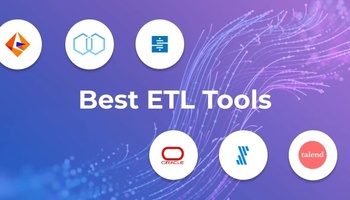Accurate data is the key to business success, and today it can come from more sources than ever. Your organization might have data stored in databases, coming from SaaS, or held at IoT devices. So how do you bring all that data together so it becomes useful for you?
The first step is data extraction. What is data extraction? Data extraction obtains the data from these sources, allowing you to consolidate your data and prepare it for analysis via one of the many available Business Intelligence (BI) tools or analytics platforms.
Proper data extraction retrieves and collates data from sources of varying types. Data may be unstructured or structured, highly organized, or not organized at all. At this stage of the data consolidation process, all that matters is that a thorough extraction of data takes place.
Why is Data Extraction Vital?
Data extraction is the critical first step in the ETL process. ETL stands for Extract, Transform, Load. It involves gathering, restructuring, and storing all your organization’s data in one place where you can access, analyze and use it effectively.
For data to be useable, it has to be accurate, and it has to be complete. Think about trying to assess how effective a particular marketing campaign was over a certain period. You would probably use a service like Salesforce or your own in-house sales monitoring software to assess actual sales or client interactions. But other useful information could include:
- Social media interaction
- How many people clicked through online adverts
- Emails, SMS, or phone calls received
- Hits on relevant blogs or web pages
- Which parts of the website people interacted with the most
Knowing what works allows you to focus on replicating that or improving on that for future campaigns. That’s why being able to extract the data from all these sources is vital. It gives you an accurate picture of how customers, clients, or users are interacting with your organization, products, or services.
Data Extraction Types
Extracting raw data without an ETL tool or other data integration solution is a fraught process — how are you going to store all that data once you’ve extracted it? It’s far more common to extract data as part of an overall process, usually either ETL or ELT. The latter stands for Extract, Load, Transfer.
You can extract the information in full from individual sources, incrementally as needed, or based on updates from the data sources themselves.
Full Data Extraction
When you set up a data pipeline to a data source, you may have to run a full extraction the very first time you do this. This ensures the data pipeline, the route between the data source and destination, works correctly and that the data source is communicating with your data warehouse or ETL tool.
Another reason full extraction may occur is that there is no way to identify changes. Or, the system could know a change has occurred but not be able to identify the exact record or data point where the change occurred, so it has no choice but to update all the data.
Incremental Data Extraction
Once a data pipeline has been established, some data sources may recognize exactly which records have updated or altered and change only those points within your data warehouse. This would extract just those new records, which is less of a drain on resources.
Notification-Based Data Extraction
In an ideal world, all data sources would provide a notification every time data changes. Some sources do this, allowing an automated extraction tool to respond and keep the data warehouse as up-to-date as possible.
During the extraction process, your extraction tool should check for changes to the structure of the data, retrieve those changed tables or records and extract them ready to replicate to your destination.
Some extraction tools use SQL to extract data from a database but will normally use APIs to connect to SaaS. That’s why it’s important to make sure your ETL tool supports the right integrations and connections. You need to be confident that you can create effective data pipelines for your organization.
Xplenty and Data Extraction
Xplenty provides a low-code data extraction tool as part of its advanced data integration platform. With a range of scheduling and monitoring options to make data extraction and transformation simpler and more efficient, Xplenty can maximize the effectiveness of your data pipeline and ensure your data is providing the profit-boosting insights you need. Schedule a conversation to find out more about our 14-day pilot program.






